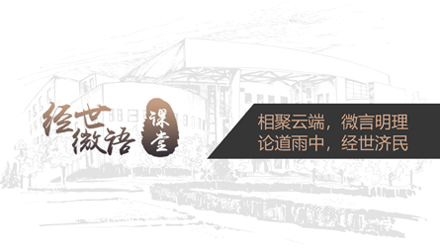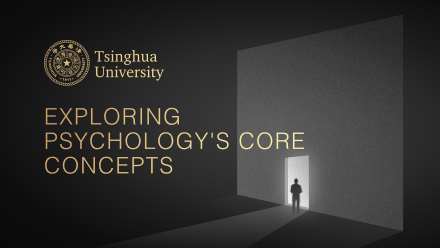
当前课程知识点:History of Chinese Architecture Part I > 3 Architecture in the Wei, Jin and the Northern and Southern Dynasties‘ Period > Section 1 > Buddhist architectural remains in the Southern and Northern Dynasties’ period
返回《History of Chinese Architecture Part I》慕课在线视频课程列表
返回《History of Chinese Architecture Part I》慕课在线视频列表
这是我们看到佛教传入时期的一个情况
下面我们看看南北朝时期的佛教建筑的遗迹
这个还是有一些
特别是石窟,保存下来的量还是比较大的
南北朝的佛教建筑当中,从文献上记载
最重要的一个实例是永宁寺
刚才我们也提到,它大概建造的年代是公元516年
是当时中国境内的第一大塔
可惜这座塔只存在了很短的时间
就因为着火,在北魏末年烧了
这座塔有九层高
下面是一个方十四丈的大平台,大台基
塔高差不多有五十丈、四十九丈
这么高的一个九层塔
在当时是一个很大的建筑,极其宏伟的建筑
现在我们对这个塔的遗址进行了发掘
大概能看到这个遗址的情况
具体塔什么样子就只能是由从事建筑考古的人来做复原
我这挑了一些复原图给大家看
每个人的理解不一样
即便是同一遗址
因为塔的形象我们今天已经看不到了
每个人对它的理解不一样
所以复原出来的塔是有差别的
这张比较接近于我们看到的北魏云冈石窟当中塔的形象
这张彩色的图是杨洪勋先生复原的
我想他恐怕是参考了北魏留下的
石窟当中塔心柱的形式来做的
可能比较接近于我们对于北魏的塔的理解。
另外下一张幻灯片大家看的是
因为我们做了永宁寺塔以后
到底这一类型的塔是什么样子
我们找了一个时间上稍微晚一点的
大概是公园6-7世纪
建在吐鲁番的一个塔的遗迹
这个塔叫台藏塔,这样的一个遗迹
大概也是方九间的一个大塔
但是这个塔我们现在保留下来的全部都是土坯
这样的一个形式大家可以参考
应当说这个时候
作为重要的佛教建筑的内容就是塔
塔分成了 ——在这个时候大概有,如果讲高层塔——
大概有两种基本的形式
一种就是刚才看到的
以永宁寺为代表的楼阁式塔
它实际上是中国单层建筑的一个叠加
把很多单层建筑叠加在一起
变成一个高的建筑,变成一座塔
另外还有一种类型就是密檐塔
密檐塔的形式不太一样
它更像是从原来的佛教标志“塔刹”
演化出的一种形式
它每层的层高比较小,檐子很密
像祚融的“上累金盘”,塔刹的样子
它的代表作品,今天保留下来现在能看到的
就是非常有名的
离少林寺不远登封的嵩岳寺塔
学者当中对于它的年代
有不同的认识
不过现在我们从建筑史的角度来说
仍然把它的时代定为北魏
大概是公元523年建的
这是这座塔的情况
我们可以看到它的塔刹,它的细部
从那些细部的纹样包括门上的纹样、柱子的纹样
你还是可以感受到从印度次大陆这样一个区域传过来的影响
另外还有一个很有意思的塔
是在五台山的佛光寺
佛光寺有一个祖师塔
没有准确的纪年
但是从形态上来看,应该还是属于早期的
梁先生把它判断为北齐的作品
这是这个塔和他的一些细部
不展开了
-1 An outline of Chinese Architecture
--Characteristics of Chinese Architecture
--The historical division of Chinese Architecture
--A discussion of the typologies in Chinese Architecture
-2 An outline of Ideas about ancient architecture
--Ancient city planning thoughts and two opposing arguments
--Principles of ancient architecture
--Ideas about ancient architecture
--Ideas about ancient architecture
-Homework
-Section 1
--Early civilization and architectural morphology
--Architecture in the Xia and Shang dynasty
--Architecture in the Xia and Shang dynasty
--Architecture in the Zhou dynasty
-Section 2
--Civilization and cities of the Qin and Han dynasty
--Palaces of the Qin and Han dynasty
--Residential architecture, tombs and other types of architecture
-Homework
-Section 1
--Cities and palaces of the Three Kingdoms, the Jin dynasty and the Southern and Northern Dynasties’ p
--Cities and palaces of the Three Kingdoms, the Jin dynasty and the Southern and Northern Dynasties’ p
--Cities and palaces of the Three Kingdoms, the Jin dynasty and the Southern and Northern Dynasties’ p
--Development of Buddhism and the prosperity of Buddhist architecture
--Buddhist architectural remains in the Southern and Northern Dynasties’ period
-Section 2
--Grottos in the Southern and Northern Dynasties’ period
--Development of wood structures as seen from grottos in the Southern and Northern Dynasties’ period
--Gardens from the Qin and Han dynasty to the Southern and Northern Dynasties’ period
-Homework
-Section 1
--Chinese culture of the Sui and Tang dynasty
--Two capitals of the Sui and Tang dynasty: Chang’an and Luoyang
--Two capitals of the Sui and Tang dynasty: Chang’an and Luoyang
-Section 2
--Li-fang and residential architecture in Chang’an and Luoyang
--Important buildings in the Sui and Tang dynasty palaces
--Gardens of the Sui and Tang dynasty
-Homework
-Section 1
--Religious architecture in the Sui and Tang dynasty
--Wood Buddhist Halls in the Sui and Tang dynasty
--Brick and masonry towers in the Sui and Tang dynasty
-Section 2
--Architectural style and design method in the Sui and Tang dynasty
--Wood frame technology in the Sui and Tang dynasty
--Brick and masonry technology in the Sui and Tang dynasty
--Progression of architectural technology and development of art
-Honework
-Section 1
--History of the Five Dynasties’ period and the Song, Liao and Jin dynasty
--Bianliang of Northern Song and Lin’an of Southern Song
--Pingjiang Prefectural City, Southern Capital of Liao and Central Capital of Jin
-Section 2
--Palaces in Bianliang of Northern Song and Lin'an of Southern Song
--Palaces in the Central Capital in the Jin dynasty
--Gardens of the Song, Liao and Jin dynasty1
--Gardens of the Song, Liao and Jin dynasty 2
-Homework
-Section 1
-Section 2
--Double-eave single-storey wood hall
--Multi-story wood structure s in the Song, Liao and Jin dynasty
-Homework
-Section 1
--Brick and masonry pagodas in the Song, Liao and Jin dynasty
--Brick and masonry pagodas in the Song, Liao and Jin dynasty
--Brick and masonry pagodas in the Liao and Jin dynasty
--Brick and masonry pagodas in the Song dynasty
--Brick and masonry pagodas in the Song dynasty
-Section 2
--A summary of the Yingzao-Fashi
--video
--video
--video
--video
--video
-Homework



